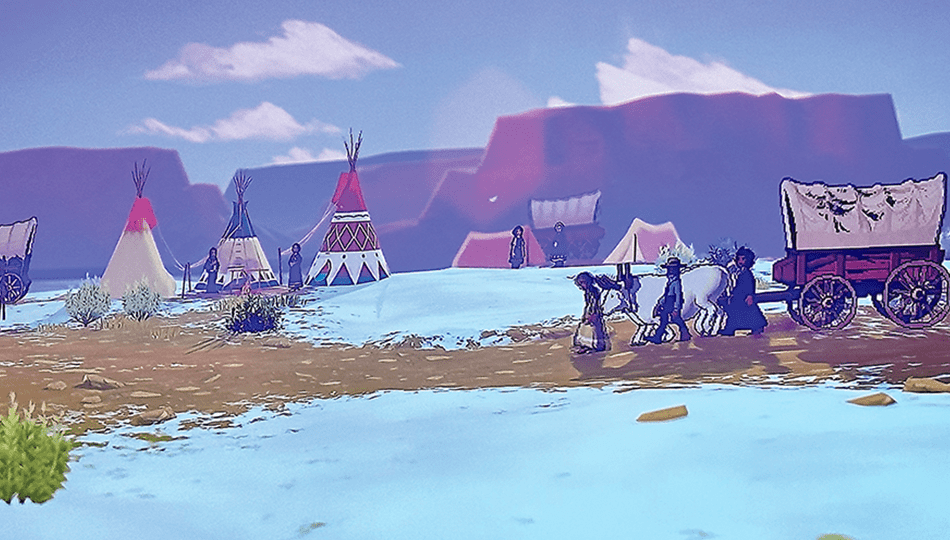By Katie Manzanares
Oregon Trail videogame 2022 receives Indigenous audit
Recently, a new version of the Oregon Trail video game has been released not so coincidently during Native American Heritage Month. The game essentially promoted the westward movement, which wasn’t good for Native people who were forced to be relocated and lost traditional lands. Many Americans traveled the route that was sure to provide work and a better way of life.
I had to see if the game had changed from the first time I played it as a third grader on a computer version that was a pixelated green-screen old Macintosh. This version depicted an odd representation of Native Peoples. My teacher would let me play as a reward or during recess break on a rainy day. Having not attended Chief Leschi and going to a school lacking diversity, sadly, this was the extent of my learning of Native peoples in school, and it was a horrible representation.
For research purposes, I downloaded the game on my Nintendo Switch; much to my surprise, there was an acknowledgment at the beginning of the game:
“In creating this new game in the beloved The Oregon Trail series, we were determined to depict Native American perspectives better. For Indigenous Peoples, westward expansion was not an adventure but an invasion. Recognizing this complex history, we have collaborated with Native American scholars to bring a new level of respectful representation to the game. For the first time, the game features Native American playable characters and stories, celebrating the history and cultures of the Peoples who first lived on this land and still live here today.”
I was truly taken aback and happy to see this. I began to look into this further, as I was surprised to know that they had done a little research to help with the misrepresentation. The original game only told the narrative from one perspective, and showcasing the acknowledgment was a huge step forward in the wrongdoings in American society. Truth and reconciliation is one way to promote a more healthy relationship between Natives and non-natives.
After asking a few different community members around my age, most of them knew of the game, and few knew of the horrible side of history that the game was based on. The original game had reiterated the Native stereotypes. I was happy to see that the game creators consulted Native American scholars in the new version to combat the misrepresentation. They consulted with a few different nations. I think they still had room to do better by consulting more nations. A lot of the Tribes share different ways of living and culture due to their demographics and weather conditions and their creation stories. According to an NPR article, one of the Native scholars really wanted to emphasize that not all Natives wore braids, for instance.
Upon playing the game, I could see a few differences right off the bat. The game had more BIPOC characters to select from at the beginning. As I passed different tribes, things changed to show more differences among the Native people. Oregon Trail is just one of the many times in history that Native depiction has come up short and inaccurate.
That’s why we have to celebrate the good changes that have been made in academia in the state of Washington with the Since Time Immemorial curriculum, which requires schools to consult local Native American Tribes on what they are teaching the children. This is why the STI curriculum is of the utmost importance to make sure that Native people are represented accurately.
Our ancestors lived in a different time in which they were not allowed to celebrate our culture. With reclaiming and revitalization, we can continue to tell our story from our perspective. Allowing teachable moments in hopes that non-natives are able to learn about our rich culture and history from our perspective, and we can look to the future in hopes that we can continue to heal from past traumas.





